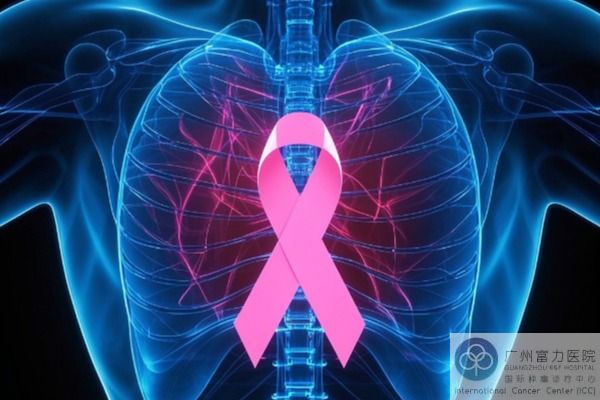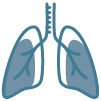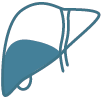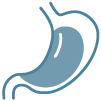——Breast cancer ——

Breast cancer poses a serious threat to women's health worldwide. Data from the World Health Organization's International Agency for Research on Cancer (IARC) show that in 2020, there were 2.26 million new cases of breast cancer worldwide, surpassing lung cancer to become the most common cancer. In the same year, approximately 685,000 people died from breast cancer, and the situation is serious.
Most breast cancers originate from breast tissue. The most common type is "adenocarcinoma", in which cancer cells are produced by glandular tissue. There are also rare types such as sarcoma that originate from muscle, fat or connective tissue. From the perspective of histology and pathology, breast cancer is mainly divided into breast carcinoma in situ and invasive carcinoma, and the treatment strategies and prognosis of different types vary significantly.
Although the pathogenesis of breast cancer is not yet fully understood, studies have identified many potential risk factors. Family heredity has a significant impact; as women age, their risk of developing cancer increases; hormone imbalance or excessive exposure to exogenous hormones can also increase the risk; in addition, lifestyle factors such as obesity and poor eating habits are also related to breast cancer. Knowing this can help women take targeted measures for prevention and early screening to reduce the threat of breast cancer.
Breast cancer stages and 5-year survival rates:
Stage 0 (carcinoma in situ): Cancer cells are confined to the breast ducts or lobular glands and have not infiltrated surrounding tissues. It is usually detected during screening, with a 5-year survival rate close to 100%, and can be clinically cured with standardized treatment.
Stage I (early stage): The tumor diameter is less than 2 cm, with no regional lymph node and distant metastasis. Some patients can feel the tumor, and the 5-year survival rate is about 98%-100%. Surgery combined with adjuvant treatment can ensure long-term survival.
Stage II: The tumor is 2-5 cm in diameter or has spread to the ipsilateral axillary lymph nodes. The breast lumps are obvious and there may be orange peel-like changes in the skin. The 5-year survival rate is about 90%-95%. Comprehensive treatment can control the disease.
Stage III: The tumor is larger than 5 cm in diameter and has spread extensively to multiple lymph nodes in the ipsilateral axilla and fused, and may invade the breast skin or chest wall. Abnormal breast appearance has a 5-year survival rate of approximately 60%-70%, and requires multidisciplinary treatment.
Stage IV (late stage): Cancer cells metastasize to distant organs such as the lungs and liver. Symptoms related to the metastatic site appear, and the 5-year survival rate is approximately 25%-30%. Treatment is mainly aimed at relieving symptoms and prolonging life.
For more cancer knowledge, please click online doctor for consultation
—— New technology for fighting breast cancer ——
What is transarterial embolization?
Transarterial embolization is a minimally invasive technique that "starves the tumor to death." Under the guidance of DSA (digital subtraction angiography), the physician inserts the catheter into the tumor-supplying artery through femoral artery puncture (only a 2mm incision) and injects embolic agents (such as drug-loaded microspheres and iodized oil) to block blood flow. The tumor necroses due to ischemia and hypoxia, while the surrounding normal tissues are almost intact. If combined with chemotherapy drugs (i.e. TACE), a double blow of "cutting off food supply + poisoning" can be achieved simultaneously, and the efficacy can be increased by 2-3 times. It is done under local anesthesia, leaving only tiny pinholes in the skin.
What is NK cell biological immunotherapy?
NK cells (natural killer cells) are the "vanguard" of the human immune system. They can quickly identify and destroy cancer cells and abnormal cells infected by viruses without having to "remember" the enemy in advance.
What is cryoablation?
Cryoablation is a minimally invasive technique that physically destroys tumors through "extremely low temperatures". Under the guidance of CT or ultrasound, the doctor accurately punctures a pen-thin ablation needle into the tumor and releases argon gas to instantly cool the tumor to -140℃~196℃. The extremely cold environment freezes cancer cells into ice crystals, and the cell structure completely collapses. Subsequently, the helium gas is quickly heated to 20°C~40°C, and the alternating hot and cold "temperature difference attack" further destroys the residual cancer cells without damaging the surrounding normal tissues.
What is iodine-125 seed implantation?
Iodine-125 seeds are a type of "mini-radiotherapist" that is only 4.5 mm in size and contains the radioactive isotope iodine-125. After accurately locating the tumor using imaging technology (such as CT), doctors use a fine needle to implant dozens to hundreds of iodine-125 particles into the tumor. These particles deliver low-dose radiation over a continuous period of time (about 6 months), directly destroying tumor cells while maximizing the protection of surrounding normal tissue.
In addition, we also have the following tumor elimination technologies:
Radiofrequency ablation, cytokine therapy, CAR-T cell therapy, microwave ablation, immune checkpoint inhibitor PD-1/PD-L1 therapy, monoclonal antibody therapy...
—— Enter the technology area to see which technology is more suitable for you
—— Breast Cancer Patient Stories ——

Maria (Philippine patient)
"Don't give up hope. No matter how difficult it is, there is always a bright future waiting for you. Face it bravely and actively seek treatment. You can also be reborn like me..."
—— To find out how she recovered, read his story
—— Symptoms of Breast Cancer ——
What are the symptoms of early breast cancer?
Breast pain
Breast asymmetry
Nipple discharge
Swollen lymph nodes
Nipple changes
Breast lumps
Skin abnormalities
Experts from Guangzhou R&F Hospital International Cancer Hospital solemnly remind all female friends that any of the above symptoms should not be underestimated and they must go to a professional hospital for a comprehensive breast examination. In daily life, women can also perform self-examinations, pay attention to breast changes at any time, and take care of their own health.
—— For more cancer knowledge, please click on the online doctor for consultation.
—— Diagnosis of Gastric Cancer ——
Common inspection methods
Ultrasound imaging examination
Biopsy
CT
Thermal imaging inspection
Tumor marker test
Experts advise
Experts from Guangzhou R&F Hospital International Cancer Hospital particularly emphasized that early detection and diagnosis are the key to improving the treatment effect of breast cancer. It is recommended that women aged 40 and above, in addition to performing breast self-examination every month, should also go to the hospital regularly for a professional breast examination every year. At present, breast cancer diagnosis technology is quite mature and can help patients detect cancer lesions in a timely manner, thus buying precious time for subsequent treatment.
—— Enter the diagnostic center to learn about the latest diagnostic and treatment technologies
Use precise technology to create more possibilities for life.
The Cancer Center of Guangzhou R&F Hospital has opened an era of "chemotherapy-free survival" for cancer patients, winning a lasting victory for life. If you or your family are facing difficulties in cancer treatment, please contact the Guangzhou R&F Hospital Cancer Center. We offer multilingual medical history consultations, contact us today to get an assessment of your treatment eligibility.
Contact Us:
email: rfcancercenter@gmail.com |
WhatsApp: +86 18022448567











































